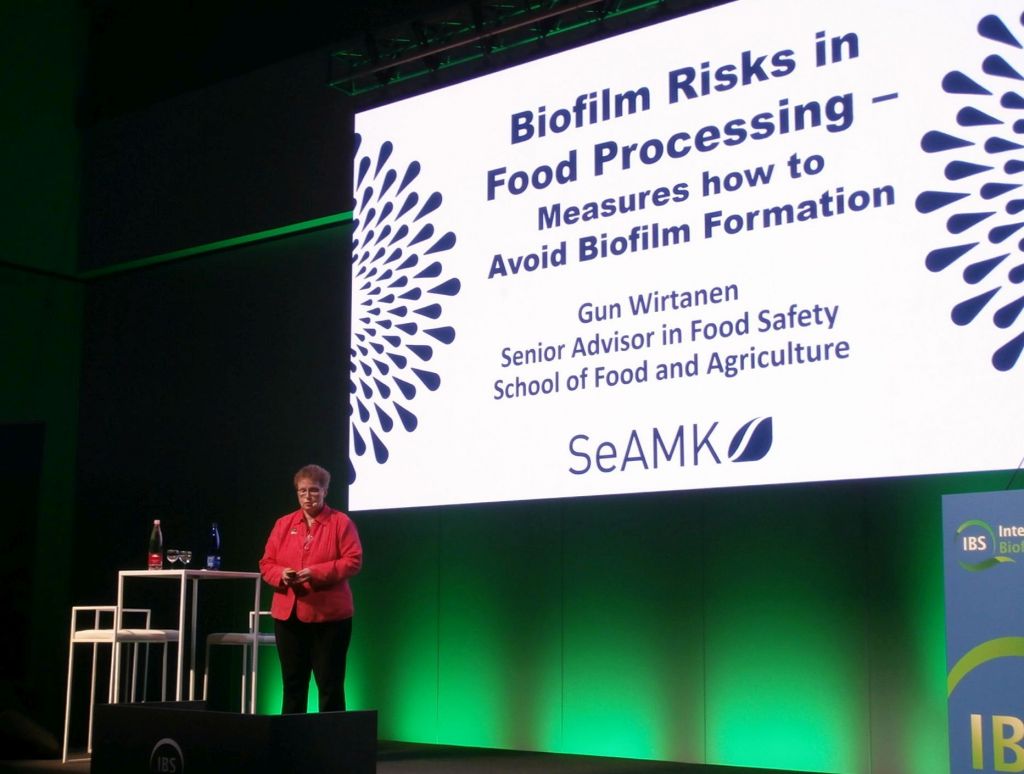Biofilm risks in food processing
The microbes – bacteria, moulds and yeasts – form biofilm, when growing on surfaces. Besides microbes, the biofilm consists of extracellular polymers and water.
Crevices and uneven surfaces act as shelters for the microbes forming biofilms. Biofilms can also persist on worn surfaces in the food process lines and equipment.
Hygienic Design Improves Process Hygiene
The biofilm risks in food production are reduced, when processing facilities, lines and equipment are hygienically designed and when tailored cleaning and disinfection procedures are used.
Biofilms of common foodborne pathogens have been studied extensively in the last decades but despite this the foodborne poisoning cases are increasing. This is shown in the annually statistics published by European Food Safety Authority (EFSA) in cooperation with European Centre for Disease Prevention and Control (ECDC).
It is shown that many foodborne poisoning cases are related to microbes forming sticky and/or slimy structures with embedded cells, i.e. biofilms, in the food processing environment.
Biofilm Formation Reduces Product Safety
Biofilms are difficult to remove especially from unhygienic structures. These prevent both the mechanical and the chemical actions in the cleaning and disinfection procedure. The cleaning and disinfection must be improved.
A proper design and maintenance of the facilities, process lines and equipment are also needed. Biofilm prevention should both limit the number of microbes and reduce their activity on food processing surfaces.
Residual biofilms left on the surfaces transfer microbes to products during processing. The microbes start to multiply or form toxins in the packaged products. These actions increase especially in packaged ready-to-eat foods with prolonged shelf-life.
Biofilm Summit in Parma
The 3rd International Biofilm Summit was held during the Cibus Tec fair, an important Italian exhibition on food processing and packaging of food products, in Parma on October 23-24, 2019. Invited experts presented facts about biofilm and its prevention. The topics including future trends were discussed.
The profitability of the process can be increased through maintenance. Furthermore, the shelf-life of finished products can be extended through control and elimination of biofilms on processing and packaging surfaces.
Dr. Gun Wirtanen, who is senior advisor in Food Safety, was invited to present measures how to avoid biofilm risks in food processing (Figure 1). In combatting biofilms hygienic design as well as improved, tailored cleaning procedures are important.
Professor Chis Griffith gave a comprehensive summary on foodborne spoilage due to both resident and transient microbes. His presentation also dealt with detection and testing methods.
As a summary it can be stated that the productivity can be maintained, product quality protected and products’ shelf-life extended through measures e.g. design, maintenance, cleaning and disinfection.

Figure 1. Dr. Gun Wirtanen, Senior advisor in Food Safety, is giving the presentation “Biofilm risks in food processing – Measures how to avoid biofilm formation” at the 3rd International Biofilm Summit. The photograph was taken by Professor Chris Griffith.
Gun Wirtanen
SeAMK School of Food and Agriculture
Seinäjoki, Finland
